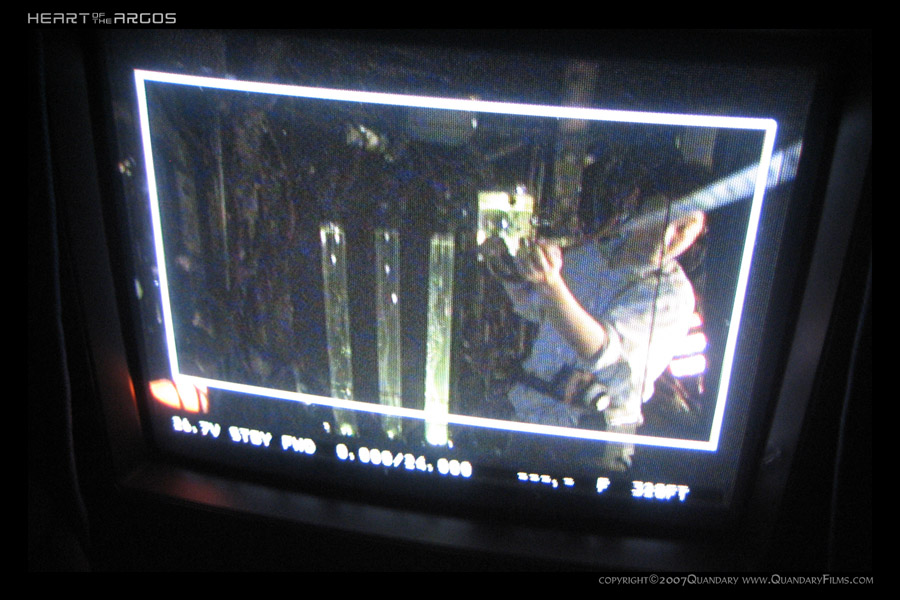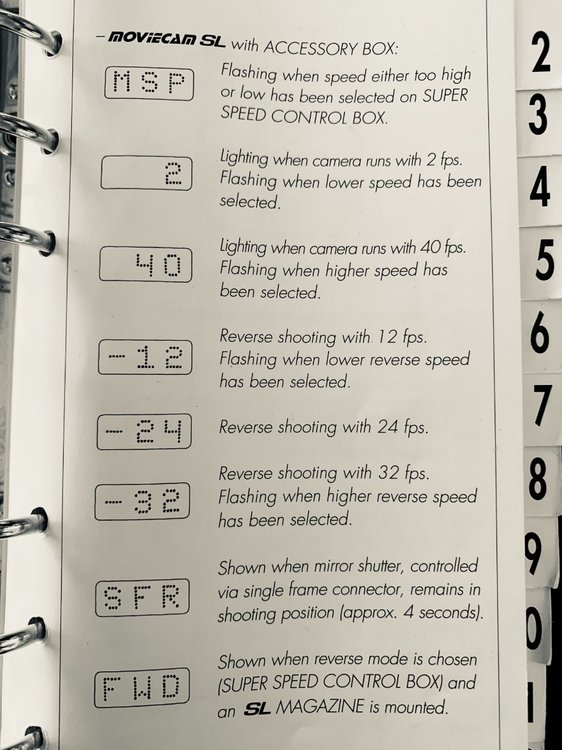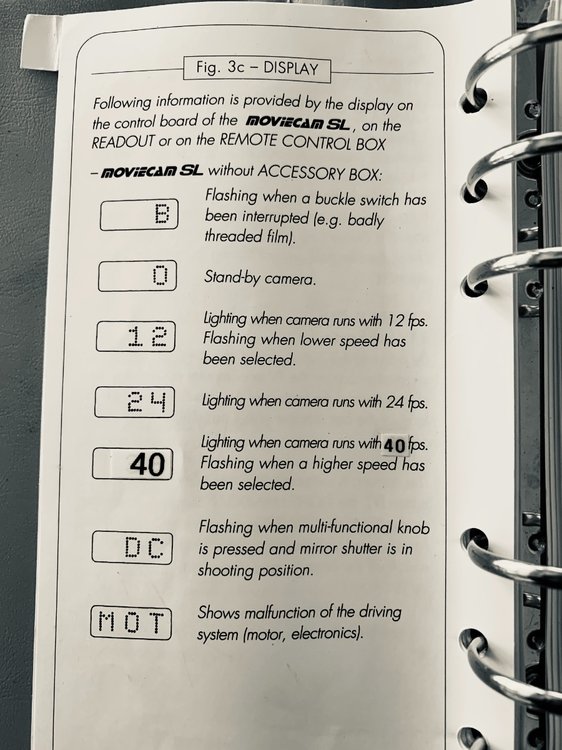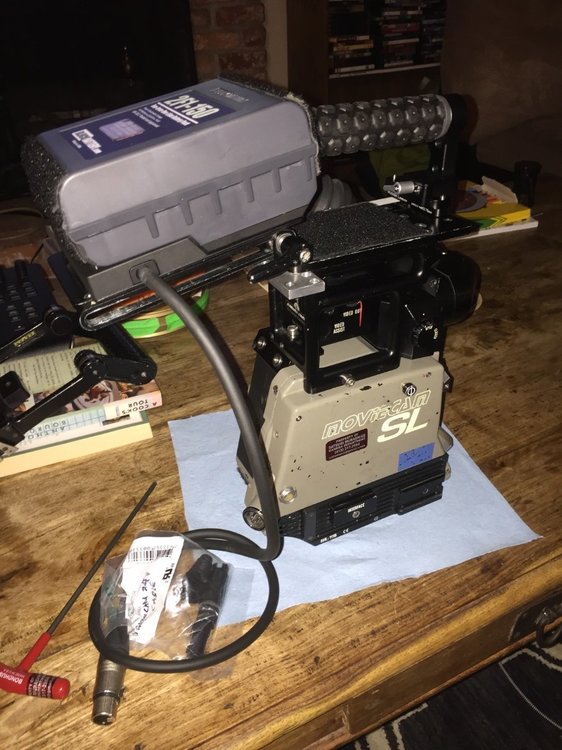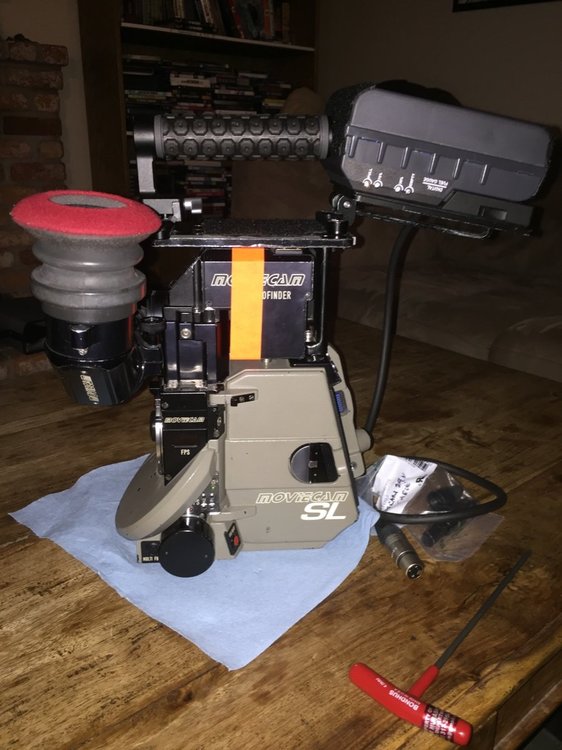-
Posts
4,560 -
Joined
-
Last visited
Everything posted by Satsuki Murashige
-

A scene solely with red lighting
Satsuki Murashige replied to Viggo Söderberg's topic in Lighting for Film & Video
Congrats! Would love to see it when the film is completed. -

At what point electricians?
Satsuki Murashige replied to Phil Rhodes's topic in Lighting for Film & Video
I don’t think there’s really much of a grey area there. (2) is a producer > production co > insurance co > legal question. Go up the chain as far as needed to get your answers. I know you’re asking about very small shoots, perhaps as your own producer, also perhaps with somewhat dubious production insurance and hopefully at least an LLC. That’s a bit of a protection, but basically next to none if something catastrophic should happen. Even if you stay within (1) and feel a high level of personal safety, something could still go wrong and you could be potentially liable - old wiring could overheat in a stinger or small tungsten lamp and start a fire, or someone could trip over a cable, or a stand could tip over and break a window. That is to say, you might be covered by (2), but you also might not be. Small incidents are much more likely to be covered than large ones. Thus, I would plan accordingly. If the plan feels unsafe, then it most likely is unsafe. All of those things and more can also go wrong on big shoots with trained and qualified personnel. But their personal threshold for (1) is much higher than ours. And they are usually protected by (2). Otherwise, they wouldn’t be doing the things they do. -

Moviecam SL power supply/power cable problems
Satsuki Murashige replied to Marian Gabriel Weber's topic in 35mm
I think it may be a Mitchell eyecup then? Would love to see a photo of your eyecup. The SL manual shows a drawing of what I have, so I assumed it was standard: There’s no iris inside, I just use the eyepiece shutter on the dumb side of the viewfinder block. It pops easily on and off, which is nice. But it’s a bit too deep and pushes the eye too far away I think. Makes it hard to see the whole frame. I often end up taking the eyecup off because I wear glasses and don’t want to mash my face into the finder. -

Moviecam SL power supply/power cable problems
Satsuki Murashige replied to Marian Gabriel Weber's topic in 35mm
Definitely worth a try! As you say, there’s nothing in SL manual about the ‘12V’ warning, which is interesting: I’m jealous of your anamorphic viewing system and Movieglow. ? -

Moviecam SL power supply/power cable problems
Satsuki Murashige replied to Marian Gabriel Weber's topic in 35mm
I thought that was the standard Moviecam eyecup? Do you have a different one? -

At what point electricians?
Satsuki Murashige replied to Phil Rhodes's topic in Lighting for Film & Video
If possible, I would hire (or at least ask) an experienced local gaffer and defer to them on personnel if I felt that I was getting in over my head. Personally, my comfort zone extends to what I can safely plug into household sockets or put-put gennies, lighting from the floor, and simple rigging like a speedrail goalpost for a backlight - beyond that, I want someone on set who knows more than me about rigging and set electricity safety. It’s just not worth the risk otherwise (to me). -

At what point electricians?
Satsuki Murashige replied to Phil Rhodes's topic in Lighting for Film & Video
Did you mean legally? Seems like a UK producer question, really. -

Moviecam SL power supply/power cable problems
Satsuki Murashige replied to Marian Gabriel Weber's topic in 35mm
Indeed, it does clear. ? It’s also possible to remove/flip the top handle and slide the battery forward or tilt it out of the way. re: weight Yes, I’ve pondered the same. I came to the conclusion that the benefits of having an untethered camera was worthwhile. Plus, I can use an Easyrig if I don’t need to wear the belt. It’s good to have a variety of power options. The camera is also still a bit front heavy on the shoulder with a small prime lens, so I’m hoping it will balance a bit better. We shall see! -
I remember that camera, the Alexa Plus will be heavier but if you were using those giant Hytron batteries then it would be roughly comparable. The issue is not just the weight, but also the length of the payload. Every time you pick up the camera, adjust a leg, perform an aggressive tilt, or slide and pan, there’s a lot of force acting on the tiny 75mm ball and it’s gonna slip. That might be only an annoyance if you mostly shoot locked off and just have to rebalance constantly. But if you do a lot of panning and tilting especially on a slider or a dolly, it’s going to ruin quite a few takes. So it really depends on what you need the tripod to do. Another thing to watch out for when playing the ‘payload roulette’ game is the side-load tripod plate. I’m generally not a fan, unless it’s a massive one that come with heads like the OConnor 2575 and Sachtler Cine 30. Generally, there’s not a lot of surface-to-surface contact holding the tripod plate to the head, which means the chance for failure is higher. An old school Touch-and-Go plate that gets sandwiched on at least two sides may not be as sexy, but it is far safer for large payloads in my opinion. Story time: I once owned a Cartoni Focus 100mm head that I routinely pushed to the limits until the little metal wedge grabbing the composite plate finally failed. And yet I kept using it. I’m embarrassed to say that I’ve caught multiple cameras in mid-air as they’ve tumbled off of that head - Red Epic, Arriflex SR2, 5D+Canon Cine Zoom lenses, etc. When said Epic fell off and smashed lens-first thru the 100 year old glass cover of a vintage pinball machine in the Musée Méchanique, I belatedly retired it. Don’t be like me! -Sats ‘Scourge of pinball machines everywhere’
-

Car scenes - live locations vs CG
Satsuki Murashige replied to pushparaj santhosh's topic in General Discussion
Shooting for real CONS: 1. Lots of logistics - need permits to shut down roads, can take a long time to rig each setup, requires long stretches of road for dialogue scenes, long resets to get the picture car back to one for each take. 2. Less control of lighting and backgrounds, difficult to maintain continuity. Can be difficult for director to get the performance they want, due to physical distance. 3. Very difficult to get usable sound. 4. Potentially unsafe if actors are doing their own driving. 5. If on a process trailer, car can appear too high off the ground compared to other traffic. 6. Can be bumpy depending on the road surface. 7. More expensive. Shooting for real PROS: 1. Looks realistic, can shoot wider angles, dolly shots. 2. May help actors performances due to real environment, especially if they don’t have to drive themselves. 3. More fun to shoot.- 1 reply
-
- 1
-

-

Moviecam SL power supply/power cable problems
Satsuki Murashige replied to Marian Gabriel Weber's topic in 35mm
It’s in beta right now: https://www.instagram.com/p/CE_5ugch0ms/?igshid=1xekpn7aiqkbh I’m planning on mounting it like this: Parts: Oppenheimer Camera Steadicam Low-mode bracket, Wooden Camera Battery Slide, Wooden Camera Top Handle, NATO rail. The Battery Booster will go on the Battery Slide and replace the BlockBattery 2F1 Direct Mount that I have now. Hopefully it won’t make the camera too top-heavy! -
I don’t think it will - the previous version of that head, the FSB 8 will barely hold an Alexa Mini. The issue is with the 75mm ball mount, there’s not enough surface area to hold that much weight without slipping. You can get away with a heavy duty 100mm head like the OConnor 1030DS although the ball will still slip when moving the camera, but ideally you’d want a 150mm or Mitchell mount to hold an Alexa Plus.
-

Moviecam SL power supply/power cable problems
Satsuki Murashige replied to Marian Gabriel Weber's topic in 35mm
I currently use BlockBattery 2F1 28.8v batteries with their 2F1 mount Belt with built-in 24v regulator. Works perfectly for me, but I will be trying the Rencher Industries Lock-on Battery Booster mount soon, which also has a 24v regulator built-in and can be mounted on the camera. I’m told it will also work with Anton Bauer 28.8v batteries. Hoping it works well, as I would like to not wear a belt or be tethered to a block if possible! -

Moviecam SL power supply/power cable problems
Satsuki Murashige replied to Marian Gabriel Weber's topic in 35mm
First of all, congrats on your new camera Marian. And welcome to the Moviecam club! ? I’ve powered my SL off of VCLX and BlockBattery blocks before, so don’t know if that’s the issue. It is true that a regulated 24v power source is ideal for these cameras, but something doesn’t sound right with your setup. If possible, I’d suggest sending your camera to a qualified camera technician like Andree Martin for a look over. There are a number of issues I’ve had with my SL that servicing helped a lot with. Happy to go into more detail if you like. -
That’s great info, thanks David. I think you’re right that dupe printing was also a huge factor. With B&W photography, there was the common advice to ‘expose for the shadows, print for the highlights’ - essentially exposing to the right since you could pull so much detail out of the highlights. But I hadn’t heard of any cinematographers actually filling the shadows with lights because they were worried about getting rich blacks. I feel like exposure choices were usually much more bold in B&W films than in color films in the 1940s-1960s, it doesn’t seem like anyone was worried about silhouettes or having just slivers of the negative exposed for dark scenes back then.
-
David, do you think that color release prints from the Eastmancolor era had comparatively weaker blacks than the black and white release prints from the same era that most of those cinematographers were used to? If so, maybe that was part of where the advice came from? I’ve never read quotes from any cinematographers saying this about shooting B&W or Technicolor process, it seemed to be always in relation to single-pack color negative. Color reversal film also never seemed to have this issue, though I suppose that is more still photography-related. The theory makes sense to me, given the amount of sliver in B&W that color normally doesn’t have. But of course, it’s impossible to say from my perspective because all of the color prints from that era that I’ve seen were already faded drastically. Of course, many B&W prints in good condition still appear to have good black levels.
-
If she’s not into uncomfortable sounds, then yeah. Otherwise, it’s a compelling drama with a lot of emotion, so she might!
-
Has anyone had a chance to watch ‘Sound of Metal’ yet?
-
Indeed. Stay away from Van Diemen at all costs. I once had a custom rehousing done there that finally arrived after going a year and a half over schedule. Paid in full in advance. Upon initial inspection, the lens had a machining defect that required me to return it to them to fix immediately. They admitted the error and said they would fix it for free, but they refused to cover the return shipping/insurance/customs fees back to the UK, saying they couldn’t afford it. It was about $150 USD/each way. When I got the lens back again a month later (shipping again billed to me), they had put someone else’s front element in. They denied the error, but when pressed, offered me another front element from someone else. At that point, I gave up with them. Take your business to TLS, Duclos, or Focus Optics. You’ll be treated right at those companies.
- 1 reply
-
- 1
-

-
This is pretty old advice, and is not relevant these days (if it ever was). You’re right that it doesn’t make any logical sense. Pure black on negative film is just clear film, which is the result of zero exposure. Adding light into those pitch black areas will either add a slight amount of shadow detail (thus no longer black), or do nothing. What really matters is how you print the film - if you print it lighter you will get grey, weak blacks. If you print it darker, you will get a richer black (up to the limit of that print stock). What will help you achieve a denser black in a print is to slightly overexpose the camera negative, since you will have to print it down to get back to a normal image. I think maybe the advice came from the idea that seeing just a hint of shadow detail made the shadows seem perceptually richer than seeing no detail? Film stocks kept improving over the decades, getting sharper, less grainy, and capturing more dynamic range. And print stocks kept getting deeper blacks too. There used to be a print stock called Kodak Vision Premier 2393 that had richer blacks than the current Vision 2383. It was more expensive than the regular 2383 and they eventually discontinued it. It’s possible that some color print processes (aside from the Technicolor dye-transfer process) didn’t have great blacks back then when this advice was common, so maybe pure black didn’t always look that great when projected? Just a guess.
-
It kinda depends on how much space you have to work with, but I’ve seen it done with solids and floppies, large ultrabounce rags with the black side in, pop-up tents, etc. Maybe someone who works in grip dept can provide more specifics. Ideally, you don’t want to use up all of your c-stands and floppies for this sort of thing, so I would think that large rags on the truck and combo stands that aren’t being used would be more ideal. Also, in case it rains it would be better to use something waterproof like ultrabounce or grifflon rather than a true solid or duvytene.
-

Would this 24V cable converter be safe to use?
Satsuki Murashige replied to Raymond Zananiri's topic in General Discussion
I think most camera people these days are used to video-specific batteries that communicate to the camera and convert remaining voltage to battery percentage, have external charge indicators, d-tap and other accessory ports, camera-fitted form factors, fast reliable charging on a variety of existing multi-chargers, etc. If you don't need these things, then I suppose you can use something much more basic. Batteries originally made for film cameras were much less fancy in that regard - the only thing they had to do was to supply the correct voltage and amperage, be rugged and portable, and have the right connectors for the camera. Also, most people who shoot on film cameras these days also shoot on video cameras, so it's nice when the same batteries can be used for both purposes. -

Iris Pull/Stop Pull examples?
Satsuki Murashige replied to Frank Poole's topic in Camera Operating & Gear
Most Steadicam shots where a camera goes from day exterior in full sun to interior in a big wide shot will have an iris pull, as it’s usually not possible or practical to light up a wide interior shot to the same level as the exterior.


